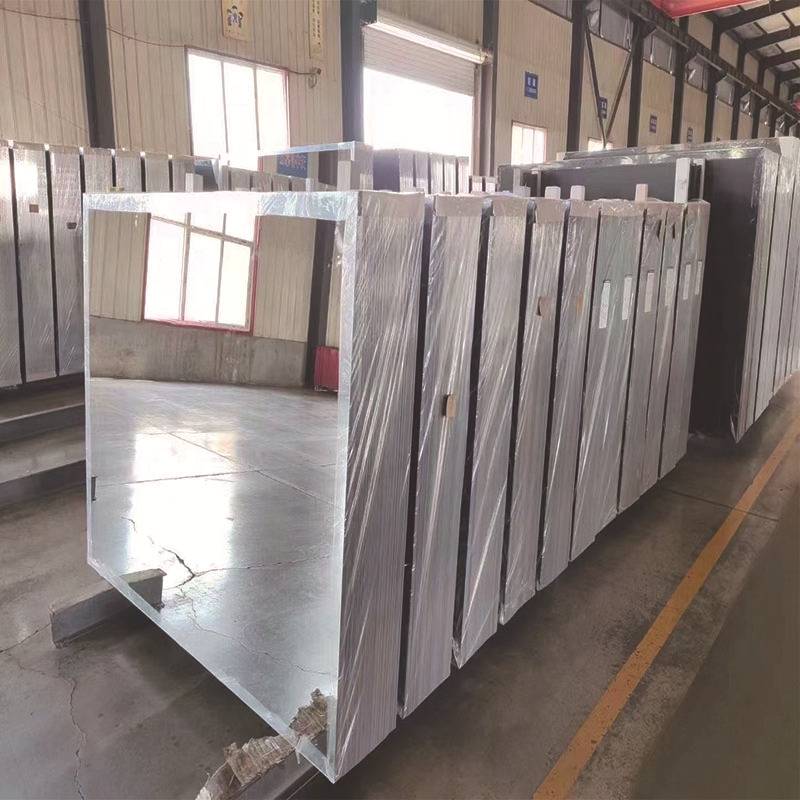The Versatility and Advantages of Architectural Laminated Glass
In the rapidly evolving world of architecture and construction, one material that has gained considerable attention is architectural laminated glass. This innovative product blends aesthetics, safety, and functionality, making it an essential choice for modern buildings and structures. This article explores the fundamental features, benefits, and applications of architectural laminated glass.
Understanding Architectural Laminated Glass
Architectural laminated glass consists of two or more glass layers bonded together with an interlayer, typically made from polyvinyl butyral (PVB) or ethylene-vinyl acetate (EVA). This process not only enhances the strength and durability of the glass but also provides various performance attributes that are crucial for contemporary architectural demands. The interlayer can come in different colors and levels of transparency, offering designers a multitude of aesthetic options to match their vision.
Safety and Security
One of the primary benefits of architectural laminated glass is its superior safety characteristics. In the event of breakage, the laminated structure holds the shards together, significantly reducing the risk of injury from flying glass fragments. This feature makes it an ideal choice for environments where safety is a top priority, such as schools, hospitals, and public buildings. Moreover, laminated glass can also be designed to improve security against forced entry, making it a preferred material for ground-level windows in commercial properties and residential homes.
Sound Insulation
Architectural laminated glass also excels in sound insulation. The layered construction can effectively dampen noise, creating a quieter indoor environment. This attribute is particularly beneficial in urban settings, where external noise from traffic and construction can be a significant disturbance. By incorporating laminated glass into their designs, architects can ensure that indoor spaces remain serene and conducive to work, learning, or relaxation.
architectural laminated glass
Energy Efficiency
In addition to safety and sound control, architectural laminated glass contributes to energy efficiency. The glass can be treated with low-emissivity (Low-E) coatings, which reflect heat while allowing light to pass through. This reflects A shift towards sustainable practices in building design and construction. By reducing the need for artificial heating and cooling, laminated glass can significantly decrease energy consumption, resulting in lower utility bills and a reduced carbon footprint.
Design Flexibility
The aesthetic versatility of architectural laminated glass cannot be overstated. It is available in a wide array of colors, tints, and patterns, allowing architects and designers to create striking visual effects. The ability to integrate digital printing into the interlayer further enhances customization options, enabling the creation of unique, branded designs that can elevate the overall character of any building. Whether employed in commercial facades, residential settings, or even artistic installations, laminated glass offers designers a powerful tool to express their creativity.
Weather Resistance
Architectural laminated glass is engineered to withstand extreme weather conditions. Whether facing heavy rains, hail, or intense sunlight, this type of glass can endure without significant degradation. This durability ensures that buildings maintain their integrity and appearance over time, reducing maintenance costs and prolonging the lifecycle of the materials.
Conclusion
Architectural laminated glass has emerged as a vital component in modern architecture, combining safety, security, aesthetics, energy efficiency, and durability. As architects continue to seek materials that can meet increasing demands for sustainability and performance, laminated glass remains at the forefront of innovative building solutions. Its versatile applications—from residential homes to skyscrapers—testify to its unparalleled capacity to enhance the architectural landscape while ensuring the safety and comfort of its occupants. As we move towards a more sustainable and safe built environment, architectural laminated glass will undoubtedly play an integral role in shaping the cities of tomorrow.
 Afrikaans
Afrikaans  Albanian
Albanian  Amharic
Amharic  Arabic
Arabic  Armenian
Armenian  Azerbaijani
Azerbaijani  Basque
Basque  Belarusian
Belarusian  Bengali
Bengali  Bosnian
Bosnian  Bulgarian
Bulgarian  Catalan
Catalan  Cebuano
Cebuano  Corsican
Corsican  Croatian
Croatian  Czech
Czech  Danish
Danish  Dutch
Dutch  English
English  Esperanto
Esperanto  Estonian
Estonian  Finnish
Finnish  French
French  Frisian
Frisian  Galician
Galician  Georgian
Georgian  German
German  Greek
Greek  Gujarati
Gujarati  Haitian Creole
Haitian Creole  hausa
hausa  hawaiian
hawaiian  Hebrew
Hebrew  Hindi
Hindi  Miao
Miao  Hungarian
Hungarian  Icelandic
Icelandic  igbo
igbo  Indonesian
Indonesian  irish
irish  Italian
Italian  Japanese
Japanese  Javanese
Javanese  Kannada
Kannada  kazakh
kazakh  Khmer
Khmer  Rwandese
Rwandese  Korean
Korean  Kurdish
Kurdish  Kyrgyz
Kyrgyz  Lao
Lao  Latin
Latin  Latvian
Latvian  Lithuanian
Lithuanian  Luxembourgish
Luxembourgish  Macedonian
Macedonian  Malgashi
Malgashi  Malay
Malay  Malayalam
Malayalam  Maltese
Maltese  Maori
Maori  Marathi
Marathi  Mongolian
Mongolian  Myanmar
Myanmar  Nepali
Nepali  Norwegian
Norwegian  Norwegian
Norwegian  Occitan
Occitan  Pashto
Pashto  Persian
Persian  Polish
Polish  Portuguese
Portuguese  Punjabi
Punjabi  Romanian
Romanian  Russian
Russian  Samoan
Samoan  Scottish Gaelic
Scottish Gaelic  Serbian
Serbian  Sesotho
Sesotho  Shona
Shona  Sindhi
Sindhi  Sinhala
Sinhala  Slovak
Slovak  Slovenian
Slovenian  Somali
Somali  Spanish
Spanish  Sundanese
Sundanese  Swahili
Swahili  Swedish
Swedish  Tagalog
Tagalog  Tajik
Tajik  Tamil
Tamil  Tatar
Tatar  Telugu
Telugu  Thai
Thai  Turkish
Turkish  Turkmen
Turkmen  Ukrainian
Ukrainian  Urdu
Urdu  Uighur
Uighur  Uzbek
Uzbek  Vietnamese
Vietnamese  Welsh
Welsh  Bantu
Bantu  Yiddish
Yiddish  Yoruba
Yoruba  Zulu
Zulu 

